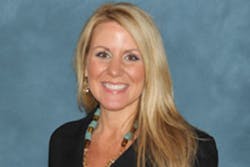Networking essential for sharing challenges, solutions, best practices
Central Service (CS) professionals face numerous challenges in the workplace, some big, some small, but all with the potential for impacting quality service and patient safety if not effectively addressed. Fortunately, if CS professionals tap the power of networking and information sharing, they won’t have to navigate those day-to-day challenges on their own.
Networking can take many different forms, and should occur both inside and outside one’s facility. Within one’s organization, CS professionals should make a concerted effort to step beyond the walls of their department and forge relationships with their healthcare customers (those in the Operating Room, GI labs, etc.) as well as infection preventionists, risk managers, material managers and administrators. To facilitate open communication, this should occur daily and as needed, and ideally be led by the CS manager, supervisor or, perhaps, an instrumentation specialist or liaison.
Branch out
Research shows a positive correlation between professional networking and productivity. And for good reason. Frequent, focused communication amongst peers and other professionals can build knowledge and support within one’s discipline and organization, challenge individuals to think more strategically and innovatively when addressing challenges and seeking solutions, and create new professional opportunities.
Although many hospitals and healthcare organizations may not encourage employees to network with competing facilities in the same city or region, those that do develop relationships with their peers from neighboring facilities can enjoy offer some notable perks. There may be times, for example, where emergencies can lead to departmental shutdowns or limited throughput, and a competing facility can be tapped to lend some assistance. This type of networking can also prove invaluable when evaluating equipment, sharing survey experiences, overcoming challenges and brainstorming solutions.
Often, the best way to network and develop positive relationships with those from other facilities is to regularly participate in local chapter meetings and seminars, and national educational conferences. During these events, dozens and even hundreds of CS professionals, vendors and other experts gather, which provides an opportune time to ask questions, share ideas and best practices, and pitch needs and requests. At the 2017 IAHCSMM Annual Conference & Expo, nearly 1,400 attendees from across the globe gathered and many could be seen carrying on meaningful conversations with their professional peers. Some could be heard sharing details of their departmental layout and equipment purchases, offering insights into newly-implemented policies and procedures, and asking for guidance on overcoming a particular obstacle within their department. One networking experience during the 2017 IAHCSMM Annual Conference left a particularly lasting impression on IAHCSMM President Steven J. Adams, RN, BA, CRCST, CHL. Some Canadian attendees were speaking with several U.S. members during an evening social event, and indicated they were in need of some ophthalmology equipment and trays for educational purposes in their Canadian providences. The instruments and trays are difficult to attain due to cost and lack of availability; however, this networking exchange proved fortuitous because one of the U.S. attendees had an abundance of those instruments and trays, and was willing to part with them. The individuals exchanged contact information, so they could arrange transport of the unused instruments and trays to the Canadian facility.
Get social
Although direct, in-person networking typically offers the greatest benefits, social media can also pay big dividends. Many IAHCSMM chapters have their own Facebook pages, for example, and LinkedIn has become a favorite of professionals looking to network with other experts within the profession (CS peers, vendors, speakers, consultants and other industry insiders). These sites allow participants to follow blog posts, enter professional discussions, stay privy to job and career changes, and even position themselves for new employment by sharing their skill sets, experience and career objectives.
Virtually anyone can tap the power of networking to drive success within their career and department. In her presentation, “The Power of Professional Networking,” Anne Marie Weber-Main, PhD., assistant professor, Department of Medicine, University of Minnesota Medical School, offered the following advice to network more effectively:
- Know your strengths and what you bring to the table.
- Be eager to learn from others.
- Network more broadly (branching beyond the low-hanging fruit).
- Be open to unexpected network connections.
- Follow through on commitments and engage in equitable give and take.
- Make yourself visible.
- Get involved in select committees or initiatives.
- Maintain a strong online presence.
However a CS professional chooses to network, one thing is clear: the efforts will pay off for the employee, customer, patient and facility. Knowledge sharing and effective communication breeds job satisfaction, confidence, and improved customer service and teamwork — all of which has a direct impact on professionalism and the delivery of safe, high quality patient
care.
About the Author

Julie E. Williamson
Julie Williamson is the IAHCSMM Communications Director.
